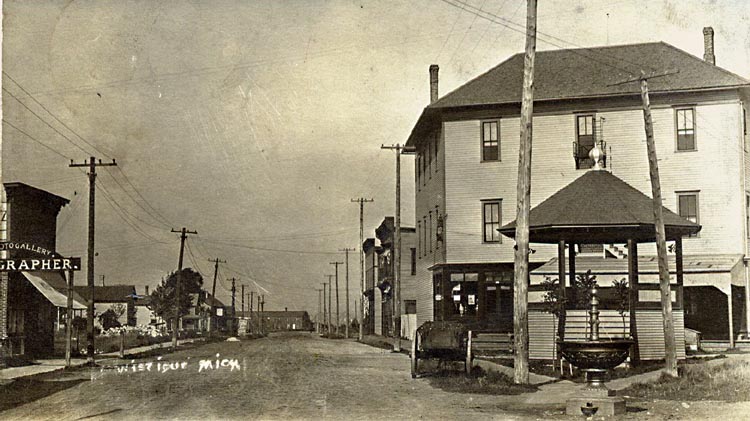Music • Photography • Writing
Louie
And Louise
Early Years
Teens
Twenties
Thirties
Forties
Fifties
Sixties
Seventies
Eighties
|
|
||
|
One
of the buildings in the photo on this postcard of Manistique,
Michigan, was the birthplace of Louise. One day when
she was about seven, she and her older brother Herman
were in their back yard poking sticks into some burning
trash when her dress caught fire. Her parents, who happened
to be in a funeral procession that passed by the house,
saw Louise running down the street ablaze, which Herman
managed to put out by rolling her on the ground. Her
father and mother stopped the procession to help and
found Louise’s left leg badly burned. Not able to get
adequate medical help in Manistique, they sent her to
the Mayo Clinic in Minnesota, where the doctors told
them that, due to her burn and fragile health, Louise
probably would not live to adulthood. Ironically, shortly
after Louise came home to Manistique after six long
months of recuperation, her brother Herman contracted
a cold that quickly became pneumonia and he died. Louise
largely recovered from her injury but her knee stiffened
up in her later years. She used crutches from then until
she was almost sixty, at which time she decided to abandon
the crutches and learn to walk without them. She never
resorted to them again, though she did use a walker
late in life. |


